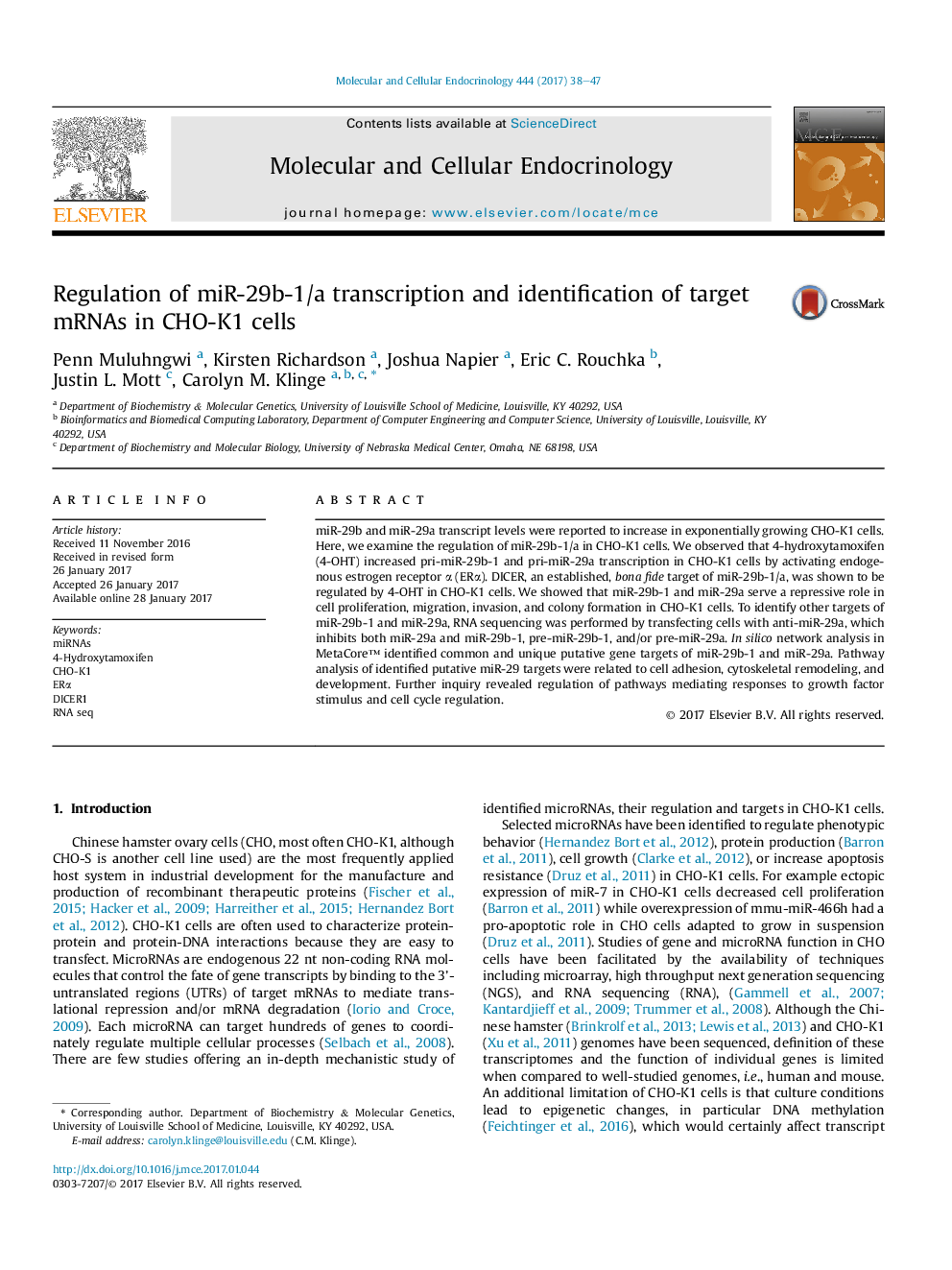| Article ID | Journal | Published Year | Pages | File Type |
|---|---|---|---|---|
| 5534182 | Molecular and Cellular Endocrinology | 2017 | 10 Pages |
â¢Tamoxifen increased transcription of miR-29b-1 and miR-29a in CHO-K1 cells.â¢miR-29b-1 and miR-29a inhibit CHO-K1 viability.â¢RNA seq identified the miR-29b-1 and miR-29a transcriptomes in CHO-K1 cells.â¢MetaCore pathway analysis identified miR-29 target pathways in CHO-K1 cells.
miR-29b and miR-29a transcript levels were reported to increase in exponentially growing CHO-K1 cells. Here, we examine the regulation of miR-29b-1/a in CHO-K1 cells. We observed that 4-hydroxytamoxifen (4-OHT) increased pri-miR-29b-1 and pri-miR-29a transcription in CHO-K1 cells by activating endogenous estrogen receptor α (ERα). DICER, an established, bona fide target of miR-29b-1/a, was shown to be regulated by 4-OHT in CHO-K1 cells. We showed that miR-29b-1 and miR-29a serve a repressive role in cell proliferation, migration, invasion, and colony formation in CHO-K1 cells. To identify other targets of miR-29b-1 and miR-29a, RNA sequencing was performed by transfecting cells with anti-miR-29a, which inhibits both miR-29a and miR-29b-1, pre-miR-29b-1, and/or pre-miR-29a. In silico network analysis in MetaCore⢠identified common and unique putative gene targets of miR-29b-1 and miR-29a. Pathway analysis of identified putative miR-29 targets were related to cell adhesion, cytoskeletal remodeling, and development. Further inquiry revealed regulation of pathways mediating responses to growth factor stimulus and cell cycle regulation.
